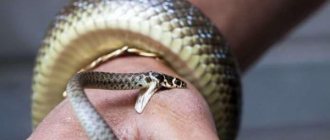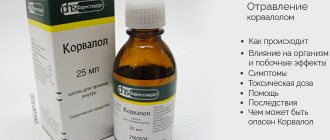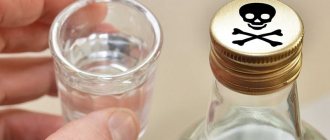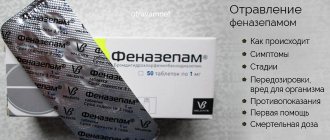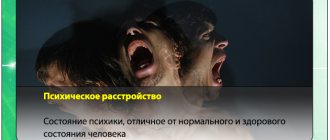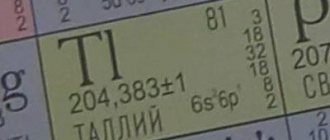Scorpions are considered the most ancient arthropods on Earth. The ancestors of scorpions appeared in the Paleozoic. Today, there are about 1,550 species of these arthropods in the world fauna. They live in deserts, forests, on sea coasts, even in mountains at an altitude of up to 6 km above sea level. Scorpions are especially common in tropical and subtropical areas. Some species are found in the Crimea, in southern Europe, the Caucasus, the Volga region, Kazakhstan, Mongolia, in the southern regions of Central Korea and the USA.
Crimean scorpion
In the countries of the former USSR, there are 15 species of scorpions, most of which are found in Central Asia. The most common is the variegated scorpion. It can be found in Dagestan, as well as in the Lower Volga region. The Mingrelian scorpion lives in western Transcaucasia. The Italian scorpion is found on the Black Sea coast of the Caucasus. The Crimean scorpion is a resident of the Crimean peninsula.
Scorpio is a predator. He hunts at night. It moves slowly, raising its tail and putting its pedipalps with claws forward. Having caught prey with its claws, it kills it with poison. On the flexible part of the scorpion's tail there is an anal blade ending in a poisonous needle with two small holes. Ducts connect the two venom glands into a lobe with the tip of the needle. Each gland is surrounded by a layer of striated muscle. When attacked by a scorpion, the muscles contract and the poison is instantly injected into the victim's body.
Help with a scorpion sting
When bitten, first of all, you need to suck out the poison from the wound, while quickly spitting (this method is only effective for 5-10 minutes after the sting). Then the affected area is treated with alcohol, peroxide or regular soap and an antiseptic bandage is applied. Next, the victim is ensured a horizontal position and immobility of the affected limb. To reduce pain, you can apply ice or use a pain-relieving ointment containing an antihistamine, pain reliever, and corticosteroid. After providing first aid, you should go to the nearest hospital.
When bitten by dangerous tropical species of scorpions, it is necessary to administer a special antivenom serum, which is available in some regions. But this must be done no later than one and a half to two hours from the moment of the sting. However, whey is a foreign protein and can sometimes cause allergies. Therefore, it is administered in fractional doses, or better yet with corticosteroids.
Sometimes there are recommendations to very quickly, before the poison can be absorbed, burn the bite site with a burning match. It is believed that this precaution partially destroys the poison. However, not all experts approve of this method.
In case of poisoning with scorpion venom, often after improvement of the condition against the background of apparent recovery, a relapse may occur. Therefore, the victim must be observed for at least 12 hours after the symptoms of poisoning disappear.
Prevention
To minimize the possibility of being stung by poisonous arthropods, you should know the habitat of dangerous species. During tourism and business travel, you should not go to unfamiliar places in the dark. This primarily concerns Africa, Australia, and South Asia, where species of arthropods that have particularly dangerous poisons are found.
Prevention of arthropod bites, including scorpions, involves avoiding perfumes and cosmetics in nature. Also, do not wear bright clothes or walk barefoot. A properly packed first aid kit for travel will help prevent complications after a sting. If a person has had allergic reactions to scorpion stings, they should have adrenergic blockers and atropine with them. Precautionary measures dictate that food should not be cooked outdoors in tropical regions.
The most dangerous scorpions
There is no consensus regarding the number of scorpion species that are deadly to humans. According to some data, there are 25 species, according to others – 50, according to others – 75. Almost all species dangerous to humans belong to the Buthidae family, only two of them are included in the Hemiscorpius family.
Among the most poisonous are three species of the Buthidae family: Leiurus quinquestriatus, Androctonus australis and Androctonus mauretanicus.
Each country has its own set of arachnid species that are medically significant. Somewhere one species dominates. For example, in Tunisia, the scorpion Androctonus australis accounts for 80% of all stings and 90% of deaths. In Iran, the scorpion Hemiscorius lepturus is responsible for only 12% of known stings, but is responsible for 95% of deaths. In Zimbabwe, 75.4% of incidents involve Parabuthus transvaalicus. In the United States, the only dangerous species is Centruroides vittalis.
Some countries have two priority species. Thus, in Saudi Arabia these are Leiurus quinquestriatus and Androctonus crassicauda, in India – Mesobuthus tamulus and Palamneits swammerdami, in Brazil – Tityus bahiensis and Tiyyus serrulatus. There are countries with a wider choice. For example, in Colombia, 39% of stings are associated with Tityus pachyurus, 24% with Centruroides gracilis, 22% with Tityus fuehrmanni, 5% with Tityus asthenes.
The venom of the spotted scorpion (Mesobuthus eupeus), found in Russia (Dagestan and the Lower Volga region), is not as dangerous for an adult as the venom of some other representatives of the Buthidae family, but it can cause a strong reaction in children.
Variegated Scorpion
What happens when bitten?
The consequences of a bite depend on the type of arachnid, the location of the lesion, the age of the victim and individual sensitivity to the poison.
In mild cases, a scorpion sting is similar to a bee sting. The pain may be minor, and redness of the skin occurs at the site of the bite. In severe cases, a very strong source of pain occurs. The injection site turns red and swells quickly, sometimes blisters appear, and the lymph nodes may become enlarged. The victim develops and intensifies weakness, headache and pain in the heart area. All this is accompanied by chills, shortness of breath and general anxiety. Next, the person becomes overcome with drowsiness, wheezing appears in the lungs, and blood pressure may rise significantly. As a result of poisoning with scorpion venom, acute pancreatitis can develop, in which a person experiences severe pain in the lumbar region.
This will come in handy
Approximately 95% of deaths and 80% of severe poisonings are recorded after encounters with thick-tailed representatives of the species - androctonus (from ancient Greek: “killer of men”), living in the forests and deserts of North Africa. A scorpion sting, the treatment of which can sometimes turn into a huge problem, is insensitive due to the presence of strong neurotoxins in the venom, which have a toxic effect on the nervous system and heart. The venom of such an insect is fatal within 7 hours from the moment of injury. The person experiences severe intoxication, and the child experiences attacks of suffocation. In this case, life can only be saved with an antidote.
Scorpion poison
Scorpion venom is protein in nature. Scientists have isolated about 30 toxins from it, which, based on the nature of their effect on animals, were divided into 3 groups. Group I included toxins that have the greatest effect on the body of mammals; group II - toxins that selectively act on insects; Group III includes toxins that are most active for crustaceans.
Toxins of the first group are the simplest protein groups with a molecular weight of 6000-9000. These are mainly neurotoxins. The second group of toxins, acting on insects, differs significantly in structure from toxins acting on the body of mammals (their molecular weight is smaller). Toxins of the third group have a molecular weight close to the toxins of the first group, but have a slightly different chemical structure.
In case of poisoning with scorpion venom, often after improvement of the condition against the background of apparent recovery, a relapse may occur. Therefore, the victim must be observed for at least 12 hours after the symptoms of poisoning disappear.
Where do scorpions live?
Dangerous scorpions are found all over the world. The main habitat is the warm, dry and hot climate of India, Asia, South Africa, the Caucasus, and South America. It is easy to recognize a scorpion by its appearance: it is no more than 15 cm, its tail has a characteristic curve, and at its top there is a sting with poison.
When a scorpion bites, the sting damages the skin and all the poison ends up in the wound. It is worth noting that each type of scorpion has a different venom, so the symptoms after a bite may vary. At first, a person may not notice how a scorpion bit him. Some experience an acute, sudden burning sensation.
Treatment
If you are bitten by a non-venomous scorpion, no special treatment is needed. It is enough to relieve pain with cold or painkillers, and also treat the wound. In other cases, nonspecific treatment is required:
- First of all, the victim is provided with peace.
- If you have muscle spasms and high blood pressure, medications are prescribed that will relieve these symptoms. Other means are also used to suppress symptoms.
- For the first 12 hours after the bite, the patient is prohibited from eating any food.
- Antitoxin serum is injected, which destroys the poison. Applies only to the bites of especially dangerous scorpions, when there is no reaction of the body to previous treatment. The antidote is used exclusively in medical institutions, in particular in the intensive care unit.
- In severe cases of scorpionism, it is necessary to ensure blood circulation and airway patency.
- In parallel, agents aimed at eliminating shock and dehydration are used as supportive treatment. Phenobarbital, diazepam, and adrenergic receptor blockers are prescribed, which combat the symptoms arising from the action of the poison.
We recommend reading: Pancreatitis during pregnancy: causes, symptoms, treatment and features
First aid rules
When attacked by a non-venomous individual, medical attention is not required. Soreness and redness of the affected area disappear after a few hours. If you have been bitten by an unknown or dangerous type of scorpion, first aid must be carried out immediately.
In the first 10 minutes after an insect attack, you can cut the area where the bite was made and try to remove the poison. You can press on the wound or suck out the injected substance. When sucking out the poison, it is periodically spat out. It is important that there are no wounds or ulcers in the mouth, otherwise the poison may enter the body.
To destroy the neurotoxin contained in the venom, you can try to cauterize the bitten area with a hot object. The following will come to help: a lit match, a metal spoon heated on a fire, or a copper coin. It is then recommended to apply a cold compress to the wound to relieve pain.
The bitten area must be treated with any antiseptic. Alcohol, hydrogen peroxide, and cologne may be useful. If you don’t have anything at hand, you can wash the affected area with warm soapy water. A tight bandage is applied to the wound area (above the bite site) to reduce the spread of the toxic substance through the bloodstream.
The bitten surface of the skin is injected with a solution of adrenaline. This method significantly reduces the absorption of toxins into the blood and will help gain more time to deliver the victim to a medical facility. It is also advisable to administer atropine. It blocks the rapid spread of poison to human nerve cells.
Important! First aid for a scorpion sting should be carried out immediately! After being bitten by an arthropod, the victim must be taken to the nearest medical center, where the necessary measures will be taken.
Bite symptoms
A scorpion sting is difficult to miss. It looks like a painful injection . Accompanied by the following symptoms:
- burning pain in the bite area. Its strength is directly proportional to the degree of venomousness of the scorpion;
- swelling and redness of the skin. If the poison is weak - in the affected area, strong - the swelling spreads further. Sometimes there is the appearance of bubbles with clear liquid at the site of the lesion;
- a feeling of numbness gradually spreading from the injection site. The scale depends on the strength of the poison;
- spasms of individual muscles or covering the whole body;
- nausea, vomiting, abdominal and abdominal pain;
- headaches, dizziness;
- pain in the throat, active salivation, which indicates intoxication of the body;
- tachycardia, loss of consciousness in especially severe cases.
When stung by a scorpion, a general restless state may occur. This is due to overexcitation of the nervous system, which is caused by the action of the poison. Sometimes the opposite reaction occurs - inhibition.
The scorpion family has about 2 thousand species. But only fifty of them are dangerous to humans. Some species are considered to be among the most poisonous creatures on the planet. These arachnids are similar to crayfish: they have four pairs of legs, two claws and a tail behind the back, on which the sting is located. Body length ranges from 2 to 18 centimeters.
Scorpions can be found in Southern Europe, Central Asia, Crimea, America and the Caucasus. The most dangerous scorpion is Leiurus quinquestriatus, which lives in North Africa and the Middle East. Since these creatures live mainly in hot countries, when going to soak up the sun, you need to be extremely careful. Scorpions are active at night. During the day, these arthropods hide under stones and in the soil. People are not usually attacked. They may bite in defense or due to fear. A timely recognized bite of this scorpion can save a life, because the venom of some species is especially dangerous. Neem poisoning is called scorpionism.
How to protect yourself from a scorpion sting
Scorpio can prick a person only in a state of fright or if he is accidentally crushed. As a rule, it does not specifically attack humans. Therefore, protecting yourself from the bites of these arthropods is quite simple.
Firstly, to spend the night outdoors in scorpion habitats, choose a flat place, clear it of dry vegetation, dead wood, and stones.
Secondly, tightly close the entrance to the tent or use canopies to protect the sleeping areas.
Thirdly, before spending the night, conduct a thorough inspection of your sleeping bags and tents.
Fourthly, shake out and carefully inspect your clothes and shoes in the morning.
Fifthly, do not visit rocky slopes at night and do not collect brushwood for a fire.
Sixth, do not walk barefoot in the desert and on sandy beaches where scorpions live, as they often bury themselves very shallowly in the sand.
Seventh, when you find a scorpion, do not provoke it under any circumstances, do not try to grab it by the tail.
Water scorpion bite. Symptoms and first aid
One of the namesakes of Scorpio is the water scorpion. This is a bug that lives in bodies of water with little moving water. This insect got its name because of its resemblance to a scorpion. It is precisely because of the external signs that the aquatic inhabitant is perceived as his poisonous fellow. But, unlike him, a scorpion living in water is not scary. It hurts to bite, but the injected liquid is absolutely harmless to humans.
However, pain at the site of the bite persists for some time.
Special treatment is usually not required.
But you can relieve discomfort and itching by applying cold to the bite site. Also, the affected area is treated with any antiseptic. If itching persists, antihistamines are used.
Scolia wasps are very caring parents. You will find a complete description of the insect in this article.
Scorpion venom is most dangerous for children, the elderly and those with weakened immune systems. The height of the bite also influences the development of poisoning. The lower the affected area, the less likely there are serious reactions.
What not to do
It is unacceptable to move the bitten limb. Otherwise, you can provoke an acceleration of the spread of poison throughout the body. It also leads to increased heart rate.
This is due to the possibility of accelerated bleeding or blood poisoning. It is not recommended to suction blood, especially if there are ulcers, scratches or carious teeth in the mouth. This can lead to negative consequences for the person who tried to provide emergency assistance to the victim.
Kanchanu Kaetkau - Thai Scorpio Queen
Interestingly, it is in Thailand that you can meet a girl who has become famous throughout the world precisely because of her love for black scorpions (note - one of the most poisonous scorpions).
Kanchanu Kaetkau, which is the name of this amazing girl, has two world records: the first Kanchanu set by holding an eighteen-centimeter scorpion in her mouth for exactly two minutes and three seconds; the second - after sitting for thirty-three days in a glass cube with more than 3,000 scorpions in the neighborhood.
Both records were included in the Guinness Book of Records, after which Kanchana was dubbed the “Scorpion Queen” in the world.
Consequences and complications
If the arthropod that bit a person was poisonous, serious consequences should be expected. They begin with severe headaches and severe burning in the area where the scorpion stung. A steadily growing tumor develops. Further consequences of the influence of scorpion venom:
- numbness of the bitten limb - in this case, the more poisonous the animal was, the more extensive the affected area will be;
- cramps that affect not only the arms or legs, but also the entire musculature;
- intense painful sensations - first appear in the abdomen, then begin to spread throughout the body.
Next comes nausea, vomiting, and severe headaches..
The greatest danger in such a condition will be a violation of cardiac and respiratory rhythms. The person may lose consciousness—fainting may last several minutes or longer. If this happens, it is recommended to constantly monitor the victim’s condition. Otherwise, respiratory arrest will develop and the bite victim may die.
We recommend reading: Calendula tincture: use and instructions, what the alcohol composition helps with
Symptoms after a scorpion sting
Immediately after being stung by a scorpion, slight pain is felt at the site of the bite. After some time, as the poison spreads, other symptoms begin to appear: severe headache, thirst, vomiting and nausea.
Weakness, apathy, and pale skin occur.
They complete the clinical picture after being stung by a scorpion:
- twitching of the upper and lower extremities;
- rise in temperature, up to the development of fever;
- bronchospasms;
- suffocation;
- pronounced sweating.
A person who has been stung by a scorpion looks like he has suffered from severe food poisoning. Severe intoxication and arterial hypertension may develop. All this occurs in the first three hours after being stung by a scorpion. Further, the clinical picture will only worsen.
During the first 12 hours after being stung by a scorpion, the patient should not eat any food. However, it is important to drink water to avoid developing dehydration, which can be fatal to humans.
Of the naturally occurring species in the northern hemisphere, scorpions of the species Centruroides sculpturatus are dangerous. Their venom affects the selection of sodium channels in nerve cells; this leads to repeated, random depolarization of nerve cell membranes with excessive excitability, neuromuscular activity and autonomic dysfunction. Anti-scorpion serum relieves symptoms within minutes, but may have side effects when used in children. No deaths have been reported in the Russian Federation for more than 20 years, but scorpion venom is a serious problem in tropical countries, with the result that there are many more deaths from scorpion bites than even from attacks by venomous snakes. In the territory of the former CIS, poisonous species are found in Crimea, the Caucasus, and Asian countries. There is a pale yellow scorpion with spots in desert areas, about 5 cm long; in the Caucasus there is a black scorpion measuring more than 10 cm. Closer to Sukhumi there is an “Italian” and many other varieties. Scorpions - butoids (variegated, Transcaucasian) are more poisonous than hactoids - from Crimea or Italy. Butoids have a larger telson (especially the thick-tailed one). In mid-latitudes, death from a scorpion sting is unlikely, but the black fat-tail is more dangerous
Scorpions are armed venomous animals, unlike unarmed ones, they attack prey, and they have a sting to hit the victim with poison. Their “sting” is located in the caudal part of the body, in the last segment of the tail in the telson, along with venom glands. The scorpion grabs the victim with its “tentacles” and with a swift movement of its tail plunges the needle into its body and injects its poison.
The scorpion is not the first to attack a person; he must be disturbed; disturb a nest under stones or touch a guest who has climbed into a shoe for the night.
The composition of scorpion venoms varies; in poisonous individuals, the bite is not only poisonous, but also causes a chemical burn. Scorpion venom is a colorless, slightly pearlescent liquid that contains neuropeptides, histamine, serotonin, hyaluronidase, acetylcholine and other active substances.
The main effect of scorpion venom is neurotoxic, so at the site of the bite there may not be any significant changes except for a purple dot with a bubble in the middle, slight swelling, but with severe pounding pain.
Symptoms consist of autonomic reactions, both sympathetic-adrenal and parasympathetic.
Shortly after the bite, shortness of breath, vomiting, and respiratory paralysis may occur. The temperature may also rise and symptoms of general intoxication may appear: weakness, abdominal cramps, pain in the heart, wheezing in the lungs, profuse sweating. Blood clotting may be impaired
Scorpion neurotoxin is superior to many animal poisons; it causes convulsive muscle twitching, generalized convulsions, changes in vascular tone, there may be an increase in blood pressure, palpitations, and rhythm disturbances. Children may have an epileptic attack with loss of consciousness and pulmonary edema.
Delayed reaction
The bite is extremely painful and the neurotoxic venom can cause immediate paralysis or partial muscle weakness some time after the bite. The bitten patient should be observed for at least two hours after seeking first aid, as the reaction may take time to develop;
- the further south and hotter the climate, the more poisonous the scorpions;
- large individuals are more poisonous than small ones;
- in the jungle, scorpion stings are often fatal
We recommend reading: Belching of bile: how to recognize, eliminate and what is the reason
First aid
If you are bitten by a scorpion, the first thing to do is make sure it is far away and won't cause harm. If possible, try to remember what color the scorpion is or take a photo of it.
Don't try to catch a scorpion!
Call 911, then wash the bite area with soap and water and apply a cold compress for 10 minutes.
It is important to note that you should not take aspirin or ibuprofen (such as Advil or Motrin) as these can cause the poison to spread quickly throughout the body. Acetaminophen (such as Tylenol) may be taken to help relieve pain at the site of the insect bite.
An anti-histamine, such as diphenhydramine (Benadryl), can help reduce swelling and itching. You can take muscle relaxants or use antibiotics. Talk to your pharmacist for further advice and to make sure any medicines you are taking are right for you.
Do not take these medications without consulting your doctor. It is necessary to fix the area where the scorpion sting occurred in such a way as to protect the wound and prevent the poison from spreading through the blood.
Do not try to suck out the poison or cut the wound; since these are excellent ways to ensure the development of infection!
In general, the best idea is to go to the nearest hospital if you are bitten by a scorpion - especially if the species is unknown.
IMPORTANT! Contact your doctor immediately if you see any of the following symptoms.
- Vomiting, sweating, drooling, or foaming at the mouth.
- Involuntary urination or excretion.
- Muscle twitching, including the head, neck, eye movements, or difficulty walking.
- Speeding up or slowing down your heart rate.
- Difficulty breathing, swallowing, speaking.
- Severe swelling from an allergic reaction.
Keep the area of injury below the level of the heart
. Unlike other stings, a scorpion sting should never be raised above the heart, as this can cause the venom to quickly spread through the circulatory system. Minimize the victim's movement to prevent an increased heart rate, which will spread the venom faster.
Calm the victim
. Worry or excitement can cause your heart rate to increase. Convince the victim that they need to move less. Remind that a scorpion sting does not cause permanent damage.
Provide first aid if necessary
. Loss of consciousness or severe convulsions are rare, but if they occur, call an ambulance immediately. Learn the basic steps of Cardiopulmonary Resuscitation and use them on the victim immediately if it is suspected that the heart has stopped.
Watch the video - what happens if a scorpion bites
First aid for a scorpion sting
Treatment consists of first aid and treatment-observation in a first-aid post.
- The first is to give an antihistamine tablet - diphenhydramine, suprastin, Zyrtec, etc.;
- The second is to relieve pain. Anesthesia - preferably local lidocaine 5-10%, alternatively in the form of an ointment, patch, gel or spray;
- If there is choking, you can inhale anti-asthma medicine from a pocket inhaler.
- The patient must be taken to a medical center under the supervision of a doctor.
- DO NOT APPLY A Tourniquet, APPLY ICE, AND CORIGINATE THE WOUND WITH MANGANESE AND AMONGIA
At the first aid station, symptomatic treatment and observation, atropine (no need to administer adrenaline!), antihistamines, a mask with oxygen and bronchodilators (if necessary). The patient should have a cardiogram taken and left under observation for 2 hours, even if the condition is satisfactory.
Anti-scorpion serum is administered only to children under 5-6 years old, old people, and in severe general condition. The serum itself can cause shock, so all manipulations should be done under the guise of cortisone. If there is no anti-scorpion serum, sometimes anti-karakurt or anti-snake serum is administered.
Working as a doctor on an island in Greece, every summer I see several people with local scorpion stings. Fortunately, there was not a single severe case in my practice.
At the first aid station, symptomatic treatment and observation, atropine (no need to administer adrenaline!), antihistamines, a mask with oxygen and bronchodilators (if necessary). The patient should have a cardiogram taken and left under observation for 2 hours, even if the condition is satisfactory.
Is a scorpion sting dangerous for humans?
If you are unlucky enough to encounter a poisonous scorpion, rest assured that it is dangerous for you. The danger in this case lies in the venom of the scorpion, which is rich in various unhealthy components.
The components of the poisonous substance in the sting of a scorpion are:
- neurotoxins (destroy the central nervous system and negatively affect human brain activity);
- antigens (cause a severe allergic reaction in the bitten person);
- other substances that disrupt the functioning of the cardiovascular system and contribute to the release of cortisol (stress hormone) in the body.
Briefly about Scorpios
These creatures belong to the class of arachnid invertebrates. They live mainly in Africa and South America, but you can find poisonous and harmless scorpions in the Caucasus and Crimea. Locals and tourists have encountered scorpions in Sochi, although the species found in southern Russia pose no threat to humans.
Arthropods sting with an anal blade - the telson. There is a needle at the end of the organ. Scorpion venom comes from it. The question arises: what is dangerous about a poisonous secretion? It contains neurotoxic polypeptides. The intensity of the poison is determined by species. There are different types of scorpions:
- imperial scorpion - has an enviable size and often appears in home terrariums. It rarely stings and reproduces well in captivity. For humans, such a scorpion is dangerous only during the period of breeding, although its poison is low-toxic,
- Caucasian scorpion - belongs to the butids, has a small size - about 8 cm. Inhabits mainly deserts and semi-deserts. The bites of an arachnid of this species are characterized by severe pain, but are not too dangerous for humans,
- Crimean scorpion - found mainly on the southern coast of Crimea. It has a light yellow color and brown claws. Refers to relict individuals,
- Abkhazian variety - also known as Mingrelian, found in Abkhazia, Georgia, Turkey. Is the bite of such a scorpion dangerous? If there is no intolerance to poison, then there will be no threat to life,
- thick-tailed scorpion - belongs to the butids, has a black or yellow color, the thick-tailed scorpion has a massive “tail”. Its bite can lead to death. The risk group includes children, the elderly, people with heart disease,
- Italian scorpion - stings painfully, but does no harm. It has modest dimensions up to 5 cm. It lives mainly in Western Europe, but can be found in the Caucasus,
- Palestinian yellow scorpion - or genuris, bites painfully, is highly toxic,
- Ranatra is a water scorpion that has nothing in common with arachnids, although it is an arthropod. The bite of water bugs burns, but no more.
Double-tailed bite
Doctors consider the question of whether a true scorpion bite is fatal to be incorrect. Much is determined by the individual reaction of the body. With increased sensitivity, the victim’s condition sharply worsens, and even a small amount of poison can cause anaphylactic shock.
Meeting arachnids in nature is problematic. These creatures are predominantly nocturnal and rarely attack first.
Scorpion sting: symptoms, first aid, consequences and treatment
The scorpion is an exotic arachnid similar to a crayfish, belonging to a type of arthropod insect, which for many centuries has brought fear to all living things. Its bite poses a huge danger to humans, including partial paralysis and death.
Scorpion sting: symptoms
A scorpion sting is similar to a painful sting or sting from a stinging insect, such as a wasp. Therefore, it is impossible not to feel the moment of contact with an arthropod creature.
As soon as the sting passes under the skin and the poison enters the body, the first signs begin to appear. Their degree will depend on the concentration of the hazardous liquid. Examples of symptoms are:
- Growing pain in the bite area. Her character is fiery;
- Redness of the skin and its swelling. Sometimes transparent blisters appear, like a burn;
- An increasing feeling of numbness in the affected area;
- Cramps. They can cover a specific muscle group or the entire body at once;
- Severe pain in the abdominal area, as well as vomiting and nausea;
- Dizziness;
- Increased salivation;
- Cardiopalmus;
- Headache;
- Pre-fainting state.
Abdominal pain, vomiting, nausea - possible symptoms of a scorpion sting
Often, against the background of a bite, tachycardia, arrhythmia, hypertension, and myocarditis develop. The victim may also feel increased agitation or anxiety, or, on the contrary, experience inhibition of movements and general condition.
If this is a dangerous deadly poison, the next stages after severe convulsions may be the patient falling into a coma, and then his death. The process can occur very quickly, within 2-4 hours from the moment of injury.
Consequences of a bite
When a non-venomous scorpion attacks, the consequences for a person appear in the form of pain, manifested by headache, paresthesia, which will go away within 2 hours; you just need to use an antihistamine.
When a poisonous insect stings, you can expect more serious problems. The victim feels a headache, a burning sensation in the bite area, and swelling.
Subsequently, the bitten leg or arm may become numb. Moreover, the more poisonous an arthropod is, the larger the bite site will be. Such symptoms are accompanied by spasms that affect both the limbs and the body. There is a manifestation of intense sensations of pain. Initial signs develop in the abdominal area, then spread throughout the body.
All these manifestations are accompanied by nausea, vomiting, and incessant headaches. The greatest danger is represented by changes in the functioning of the heart and breathing, and loss of reason.
Sometimes the patient experiences an enlargement of the lymph nodes that are located near the bite.
The consequences of scorpion attacks are manifested by necrosis of the skin at the puncture site and tissue necrosis.
Is a scorpion sting fatal? Be sure to monitor the victim, since respiratory arrest can provoke the death of the patient.
